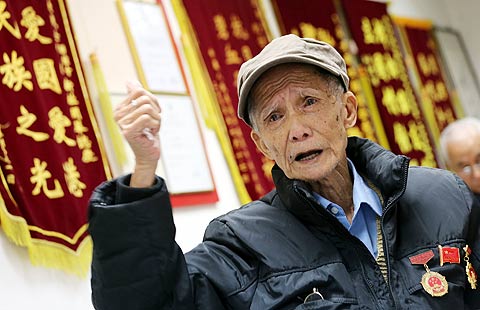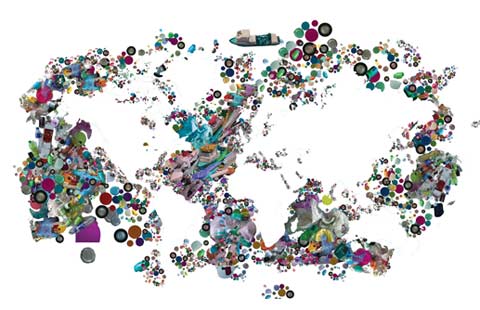The system of safeguarding and promoting disabled persons' access to education and employment is being improved, with the emphasis on the enrollment of disabled children who were registered as having not attended school. China has drawn up the Promotion Plan for Special Education (2014-2016), expanded the coverage of compulsory education, developed preschool education for disabled children in different ways according to different local conditions, accelerated the progress of disabled teenagers' senior high school-level education, centering on vocational education, and improved higher-learning education for disabled people. The Chinese government increased financial input, enhanced the quality and quantity of teachers, and further improved curriculum for disabled people. It continued to implement the Plan for Building Special Schools (Phase II), providing 800 million yuan of specialized funds to support the building of 27 normal colleges for special education and middle and higherlearning schools for disabled people. The central government provided another 55 million yuan of special subsidies to strengthen the special school building in ten central and western provinces. A national special disability lottery program was held, raising funds for 10,000 disabled children from poverty-stricken families to have access to preschool education and for 23 special middle or higher-learning schools to improve their teaching facilities and practical training centers. There were 7,538 disabled students enrolled by ordinary institutions of higher-learning in 2013. The government drew up the Opinions on Promoting the Employment of Disabled Persons in Proportion to Total Employment, increasing the skill training opportunities and job posts for disabled people. Over the year, 369,000 disabled people were employed and 480,000 received training in urban areas; in rural areas, 856,000 received training in practical skills. The government encouraged and supported welfare enterprises so as to promote the employment of disabled persons and ensure their equal status in society. By 2013, there were 18,000 welfare enterprises in China, employing a total of 542,000 disabled people.
The social security system for disabled persons is being further improved. The Chinese government has enlarged the range of disabled people's social welfare and raised their benefit level. By 2013 over 6.28 million disabled persons in both urban and rural areas received the minimum subsistence allowance, 4.014 million disabled persons in urban areas and 16.383 million in rural areas participated in the respective endowment insurance systems, and 944,000 disabled people were looked after by social services. The governments explored ways to provide poverty-stricken disabled people with living subsidies and severely disabled people with care subsidies. Some 15 provinces (autonomous regions and municipalities directly under the central government) established the system of granting living subsidies to poverty-stricken disabled people, and eight provinces (autonomous regions and municipalities directly under the central government) established the system of granting care subsidies to severely disabled people, benefiting over 6 million disabled people.
The development-oriented poverty alleviation for disabled persons is being strengthened. The Chinese government included poverty alleviation and development of disabled persons in relevant programs, and made disabled people a priority when carrying out poverty alleviation policies and measures. Poverty-stricken disabled people were included in the overall poverty monitoring, and a statistics system for development-oriented poverty alleviation for disabled people in contiguous poverty-stricken areas was set up. The assistance to and poverty alleviation for disabled people in the agricultural sector was strengthened in a bid to increase their incomes. Local governments also supported disabled people by providing agricultural technology services or helping them found special cooperatives, strengthened the skill training in agricultural production and business management for disabled people in rural areas, assisted rural families with one or more disabled members to buy and use agricultural machines, and accelerated the improvement of conditions for the supply of gas to them for daily use by giving preferences and increasing subsidies. The renovation of dilapidated houses of poor families with one or more disabled members was given high priority, and the proportion of renovated houses of poor families with one or more disabled members in the total of renovated houses in the year was higher than the proportion of existing dilapidated houses of poor families with one or more disabled members in all dilapidated houses. According to the Project Plan for Screening Illnesses Among Newborn Babies in Poverty-stricken Areas in 2013, local governments conducted screening for phenylketonuria, congenital hypothyroidism and hearing loss among 490,000 newborn babies in rural areas, and provided the sick babies with rehabilitation aids in 14 national contiguous poverty-stricken areas involving 200 counties in 21 provinces (autonomous regions and municipalities directly under the central government). In 2013 some 1.206 million disabled people in rural areas got rid of poverty and 122,000 rural families with one or more disabled members renovated their houses.
Access for disabled people is being improved. China has enacted the Regulations for Building a Barrier-free Environment, making efforts to remove environmental barriers in both urban and rural areas. In 2013 the Chinese government helped improve access for 136,000 families with one or more disabled members, and granted 657,000 disabled people fuel subsidies for motorized wheelchairs. In order to make disabled people's traveling more convenient, the China Civil Aviation Administration amended the Regulations of Air Transport for Disabled Persons (Trial), and the China Railway Corporation arranged special seats for disabled persons in every train, providing 48,000 special tickets for disabled persons and making 1,268 carriages barrier-free. Various cities and counties started to build a barrier-free environment. Some of the websites of 117 ministries and commissions as well as provincial governments claimed that they had become barrier-free in accordance with the Technical Norms for Designing Barrier-free Accessible Websites. China accelerated the R&D for assistance devices and began researching and laying down technical criteria for devices for the blind and screen readers. The Chinese government launched the "2013 Beautiful China Actions for Barrier-free Access to Government Information," improving the websites of various government departments, and began to build a barrier-free information system in the cities.











